Yes, it is St. Patrick’s Day but today is also a special one for me as I celebrate my seventieth birthday. I am told that when I was born, my parents settled on naming me Andrew David, but other folk thought they ought to include Patrick. Except then I’d need George as well, which would have been far too many! So, Saint Patrick’s Day, or the Feast of Saint Patrick (in Irish, ‘Lá Fhéile Pádraig’, literally the Day of the Festival of Patrick), is a cultural and religious celebration held on 17 March each year, the traditional death date of Saint Patrick (c. 385 – c. 461), the foremost patron saint of Ireland. Saint Patrick’s Day was made an official Christian feast day in the early seventeenth century and is observed by the Catholic Church, the Anglican Communion (especially the Church of Ireland), the Eastern Orthodox Church and the Lutheran Church. The day commemorates Saint Patrick and the arrival of Christianity in Ireland. These celebrations generally involve public parades and festivals, dancing and the wearing of green attire or shamrocks. Christians who belong to liturgical denominations also attend church services and historically, the Lenten restrictions on eating as well as the drinking of alcohol were lifted for the day, which has encouraged and propagated the holiday’s tradition of alcohol consumption. Saint Patrick’s Day is a public holiday in the Republic of Ireland, Northern Ireland, the Canadian province of Newfoundland and Labrador (for provincial government employees), and the British Overseas Territory of Montserrat. It is also widely celebrated in the United Kingdom, Canada, the U.S.A., United States, Argentina Australia and New Zealand, especially amongst Irish diaspora. It seems that Saint Patrick’s Day may be celebrated in more countries than any other national festival! Modern celebrations have been greatly influenced by those of Irish descent, most particularly those in North America. Sadly however, there has been criticism of Saint Patrick’s Day celebrations for having become too commercialised and for fostering negative stereotypes of the Irish people.
Saint Patrick was a fifth-century Romano-British Christian missionary and Bishop in Ireland. Much of what is known about him comes from a ‘Declaration’ allegedly written by Patrick himself. It is believed that he was born in Roman Britain in the fourth century into a wealthy Romano-British family. His father was a deacon and his grandfather was a priest in the Christian church. According to his ‘Declaration’, at the age of sixteen he was kidnapped by Irish raiders and taken as a slave to Gaelic Ireland. It says that he spent six years there working as a shepherd and that during this time he found God. In the Declaration he states that God told him to flee to the coast, where a ship would be waiting to take him home and after making his way home, Patrick went on to become a priest. According to tradition, Patrick then returned to Ireland to convert the pagan Irish to Christianity, which he successfully did. However, Patrick’s efforts were then turned into an allegory in which he drove snakes out of Ireland, despite the fact that it was already known that snakes did not inhabit the country. Tradition holds that he died on 17 March and was buried at Downpatrick and over the following centuries, many legends grew up around Patrick and he became Ireland’s foremost saint.
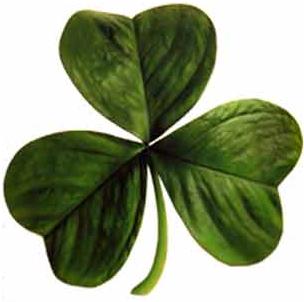
According to legend, Saint Patrick used the three-leaved shamrock to explain the Holy Trinity to Irish pagans. Incidentally, as part of my research I have learned that there is a difference between Shamrocks and Clovers. To start with, shamrocks always have three leaves, whilst clovers can have a fourth leaf. Shamrocks are usually green, but you can find purple, green or white clover. Finally, shamrocks grow in clumps, while four-leaf clovers are rare and grow one at a time. But back to the story. Celebrations generally involve public parades and festivals, Irish traditional music sessions and the wearing of green attire or shamrocks. There are also formal gatherings such as banquets and dances, although these were more common in the past. The participants generally include marching bands, the military, fire brigades, cultural organisations, charitable organisations, voluntary associations, youth groups and so on. More effort is made to use the Irish language, especially in Ireland, where 1 March to St Patrick’s Day on 17 March is ‘Seachtain na Gaeilge’ or Irish Language Week. Since 2010, famous landmarks have been lit up in green on Saint Patrick’s Day as part of Tourism Ireland’s ‘Global Greening Initiative’ or ‘Going Green for St Patrick’s Day’. The Sydney Opera House and the Sky Tower in Auckland were the first landmarks to participate in this and since then over 300 landmarks in fifty countries across the globe have gone green for Saint Patrick’s Day. Christians may also attend church services and the Lenten restrictions on eating as well as the drinking of alcohol are lifted for the day. Perhaps because of this, the drinking of alcohol, particularly Irish whiskey, beer, or cider, has become an integral part of the celebrations, so as you might imagine the tradition of ‘drowning’ or ‘wetting’ the shamrock was historically popular. At the end of the celebrations, especially in Ireland, a shamrock is put into the bottom of a cup, which is then filled with whiskey, beer, or cider. It is then drunk as a toast to Saint Patrick, Ireland, or those present. The shamrock would either be swallowed with the drink or taken out and tossed over the shoulder for good luck. Irish Government Ministers travel abroad on official visits to various countries around the globe to celebrate Saint Patrick’s Day and promote Ireland and the most prominent of these is the visit of the Irish Taoiseach (Irish Prime Minister) with the U.S. President, which happens on or around Saint Patrick’s Day. Traditionally the Taoiseach presents the U.S. President a Waterford Crystal bowl filled with shamrocks, as this tradition began when, in 1952, Irish Ambassador to the U.S. John Hearne sent a box of shamrocks to President Harry S. Truman. From then on it became an annual tradition of the Irish ambassador to the U.S. to present the Saint Patrick’s Day shamrock to an official in the U.S. President’s administration, although on some occasions the shamrock presentation was made by the Irish Taoiseach or Irish President to the U.S. President personally in Washington. But it was only after the meeting between Taoiseach Albert Reynolds and President Bill Clinton in 1994 that the presenting of the shamrock ceremony became a recognised annual event for the leaders of both countries for Saint Patrick’s Day. The presenting of the Shamrock ceremony was cancelled in 2020 due to the severity of the COVID-19 pandemic.
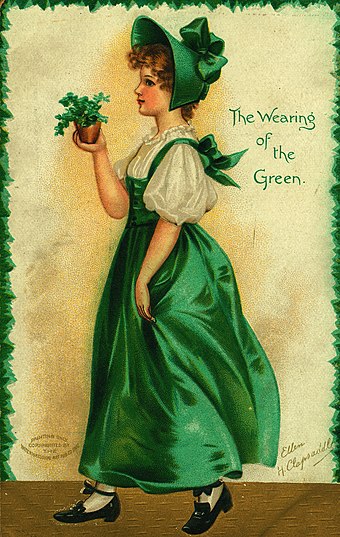
On Saint Patrick’s Day, it is customary to wear shamrocks, green clothing or green accessories. Saint Patrick is said to have used the shamrock, a three-leaved plant, to explain the Holy Trinity to the pagan Irish and this story first appears in writing in 1726, though it may be older. In pagan Ireland, three was a significant number and the Irish had many triple deities, which may have aided St Patrick in his evangelisation efforts. The first association of the colour green with Ireland is from a legend in the eleventh century ‘Lebor Gabála Érenn’, The Book of the Taking of Ireland. It tells of Goídel Glas (Goídel the green), the eponymous ancestor of the Gaels and creator of the Goidelic languages (Irish, Scottish Gaelic and [Manx). It is said that Goídel is bitten by a venomous snake, but saved from death by Moses placing his staff on the snakebite, leaving him with a green mark and his descendants then settled in Ireland, a land free of snakes. The colour green was further associated with Ireland from the 1640s, when the green harp flag was used by the Irish Catholic Confederation. Green ribbons and shamrocks have been worn on St Patrick’s Day since at least the 1680s and since then, the colour green and its association with St Patrick’s Day have grown. The Friendly Brothers of St Patrick, an Irish fraternity founded in about 1750, adopted green as its colour. However the Order of St Patrick, an Anglo-Irish chivalric order founded in 1783, instead adopted blue as its colour, which led to blue also being associated with St Patrick. Then in the 1790s, the colour green was adopted by the United Irishmen. This was a republican organisation, led mostly by Protestants but with many Catholic members, who launched a rebellion in 1798 against British rule. Ireland was first called ‘the Emerald Isle’ in “When Erin First Rose” (1795), a poem by a co-founder of the United Irishmen, William Drennan, which stresses the historical importance of green to the Irish and the phrase ‘wearing of the green’ comes from a song of the same name about United Irishmen being persecuted for wearing green. The flags of the 1916 Easter Rising featured green, such as the ‘Starry Plough’ banner and the Proclamation Flag of the Irish Republic. When the Irish Free State was founded in 1922, the government ordered all post boxes be painted green, under the slogan ‘green paint for a green people’ and in 1924 the government introduced a green Irish passport. The wearing of the ‘St Patrick’s Day Cross’ was also a popular custom in Ireland until the early twentieth century. These were a Celtic Christian cross made of paper that was covered with silk or ribbon of different colours, and a bunch or rosette of green silk in the centre.
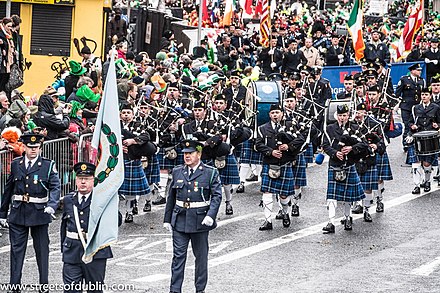
It seems that as a kind of national day, Saint Patrick’s Day was already being celebrated by the Irish in Europe in the ninth and tenth centuries and only in later times did he become more and more widely seen as the patron of Ireland. Saint Patrick’s feast day was finally placed on the universal liturgical calendar in the Catholic Church due to the influence of Waterford-born Franciscan scholar Luke Wadding in the early 1600s. Saint Patrick’s Day thus became a holy day of obligation for Roman Catholics in Ireland. It is also a feast day in the Church of Ireland, which is part of the worldwide Anglican Communion. The church calendar avoids the observance of saints’ feasts during certain solemnities, moving the saint’s day to a time outside those periods and St Patrick’s Day is occasionally affected by this requirement, when 17 March falls during Holy Week. This happened in 1940, when Saint Patrick’s Day was observed on 3 April to avoid it coinciding with Palm Sunday, and again in 2008 where it was officially observed on 15 March. St Patrick’s Day will not fall within Holy Week again until 2160. In 1903, St Patrick’s Day became an official public holiday in Ireland and this was thanks to the Bank Holiday (Ireland) Act 1903, an act of the United Kingdom Parliament introduced by Irish Member of Parliament James O’Mara. The week of St Patrick’s Day in 1903 was declared Irish Language Week by the Gaelic League and in Waterford they opted to have a procession on Sunday 15 March. The procession comprised the Mayor and members of Waterford Corporation, the Trades Hall, the various trade unions and bands. The parade began at the premises of the Gaelic League in George’s St and finished in the Peoples Park, where the public were addressed by the Mayor and other dignitaries. On Tuesday 17 March, most Waterford businesses, including public houses, were closed and marching bands paraded as they had two days previously. The Waterford Trades Hall had been emphatic that the National Holiday be observed. On St Patrick’s Day 1916, the Irish Volunteers, an Irish nationalist paramilitary organisation, held parades throughout Ireland. The authorities recorded thirty-eight St Patrick’s Day parades, involving 6,000 marchers, almost half of whom were said to be armed and the following month, the Irish Volunteers launched the Easter Rising against British rule. This marked the beginning of the Irish revolutionary period and led to the Irish War of Independence and Civil War. During this time, St Patrick’s Day celebrations in Ireland were muted, although the day was sometimes chosen to hold large political rallies. The celebrations remained low-key after the creation of the Irish Free State, the only state-organised observance was a military procession, trooping of the colours and an Irish-language mass attended by government ministers. In 1927, the Irish Free State government banned the selling of alcohol on St Patrick’s Day, although it remained legal in Northern Ireland. The ban was not repealed until 1961. The first official, state-sponsored St Patrick’s Day parade in Dublin took place in 1931. On three occasions, parades across the Republic of Ireland have been cancelled from taking place on St Patrick’s Day, with all years involving health and safety reasons. In 2001, as a precaution to the foot-and-mouth outbreak, St Patrick’s Day celebrations were postponed to May and in 2020 and 2021, as a consequence to the severity of the COVID-19 pandemic the St Patrick’s Day Parade was cancelled outright. Organisers of the St Patrick’s Day Festival 2021 instead hosted virtual events around Ireland on their SPF TV online channel.

In Northern Ireland, the celebration of St Patrick’s Day was affected by sectarian divisions. A majority of the population were Protestant Ulster unionists who saw themselves as British, whilst a substantial minority were Catholic Irish nationalists who saw themselves as Irish. Although it was a public holiday, Northern Ireland’s unionist government did not officially observe St Patrick’s Day. During the conflict known as ‘The Troubles’ (late 1960s to late 1990s), public St Patrick’s Day celebrations were rare and tended to be associated with the Catholic community. In 1976, loyalists detonated a car bomb outside a pub crowded with Catholics celebrating St Patrick’s Day in Dungannon where four civilians were killed and many were injured. However, some Protestant unionists attempted to ‘re-claim’ the festival, and in 1985 the Orange Order held its own St Patrick’s Day parade. Since the end of the conflict in 1998 there have been cross-community St Patrick’s Day parades in towns throughout Northern Ireland, which have attracted thousands of spectators and in the mid-1990s the government of the Republic of Ireland began a campaign to use St Patrick’s Day to showcase Ireland and its culture. The government set up a group called St Patrick’s Festival, which aimed to offer a national festival that ranks amongst all of the greatest celebrations in the world, to create energy and excitement throughout Ireland via innovation, creativity, grassroots involvement, and marketing activity, to provide the opportunity and motivation for people of Irish descent (and those who sometimes wish they were Irish) to attend and join in the imaginative and expressive celebrations and to project, internationally, an accurate image of Ireland as a creative, professional and sophisticated country with wide appeal. The first St Patrick’s Festival was held on 17 March 1996. In 1997, it became a three-day event, and by 2000 it was a four-day event. By 2006, the festival was five days long; more than 675,000 people attended the 2009 parade. Overall 2009’s five-day festival saw almost 1 million visitors, who took part in festivities that included concerts, outdoor theatre performances, and fireworks. The Skyfest, which ran from 2006 to 2012, formed the centrepiece of the St Patrick’s festival. The topic of a 2004 St Patrick’s Symposium was “Talking Irish”, during which the nature of Irish identity, economic success, and the future were discussed. Since 1996, there has been a greater emphasis on celebrating and projecting a fluid and inclusive notion of ‘Irishness’ rather than an identity based around traditional religious or ethnic allegiance. The week around St Patrick’s Day usually involves Irish language speakers using more Irish during “Seachtain na Gaeilge” (Irish Language Week). Christian leaders in Ireland have expressed concern about the secularisation of St Patrick’s Day and in ‘The Word’ magazine’s March 2007 issue, Fr Vincent Twomey wrote, “It is time to reclaim St Patrick’s Day as a church festival”. He questioned the need for “mindless alcohol-fuelled revelry” and concluded that “it is time to bring the piety and the fun together”. The biggest celebrations outside the cities are in Downpatrick, County Down, where Saint Patrick is said to be buried. The shortest St. Patrick’s Day parade in the world formerly took place in Dripsey, County Cork. The parade lasted just 23.4 metres (25.6 yards) and travelled between the village’s two pubs. The annual event began in 1999, but ceased after five years when one of the two pubs closed.

Research shows that celebrations abound elsewhere around the world though. In England, the British Royals traditionally present bowls of shamrock to members of the Irish Guards, a regiment in the British Army, following Queen Alexandra introducing the tradition in 1901 and since 2012 the Duchess of Cambridge has made the presentation. The Scottish town of Coatbridge, where the majority of the town’s population are of Irish descent, also has a Saint Patrick’s Day Festival which includes celebrations and parades in the town centre and Glasgow has a considerably large Irish population; due, for the most part, to the Irish immigration during the nineteenth century. This immigration was the main cause in raising the population of Glasgow by over 100,000 people.
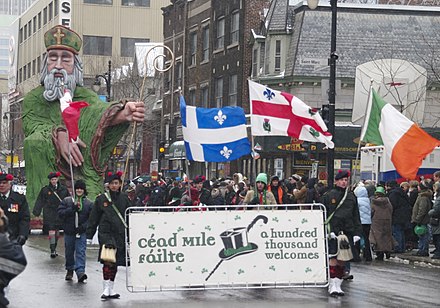
One of the longest-running and largest Saint Patrick’s Day parades in North America occurs each year in Montreal, whose city flag includes a shamrock in its lower-right quadrant. The yearly celebration has been organised by the United Irish Societies of Montreal since 1929 and the parade has been held yearly without interruption since 1824. St Patrick’s Day itself, however, has been celebrated in Montreal since as far back as 1759 by Irish soldiers in the Montreal Garrison following the British conquest of New France. There has been a parade held in Toronto since at least 1863, and many other places in Canada hold celebrations each year. In the U.S.A., whilst not a legal holiday there, the event is widely recognised and observed throughout the country as a celebration of Irish and Irish-American culture. Celebrations include prominent displays of the colour green, religious observances, numerous parades, and copious consumption of alcohol. The holiday has been celebrated in what is now the U.S.A. since 1601. In 2020, for the first time in over 250 years, the parade in New York City was postponed due to concerns about the COVID-19 pandemic. Meanwhile the first Saint Patrick’s Day parade in Russia took place in 1992. Since 1999, there has been a yearly ‘Saint Patrick’s Day’ festival in Moscow and other Russian cities. The official part of the Moscow parade is a military-style parade and is held in collaboration with the Moscow government and the Irish embassy in Moscow. The unofficial parade is held by volunteers and resembles a carnival. The island of Montserrat is known as the “Emerald Island of the Caribbean“ because of its founding by Irish refugees from Saint Kitts and Nevis. Montserrat is one of three places where Saint Patrick’s Day is a public holiday, along with the Canadian province of Newfoundland and Labrador. The holiday also commemorates a failed slave uprising that occurred on 17 March 1768. In Australia, the first mention of St Patrick’s Day being celebrated there was in 1795, when Irish convicts and administrators in the penal colony, both Catholic and Protestant, all came together to celebrate the day as a national holiday and this was despite a ban against assemblies being in place at the time. But this unified day of Irish nationalist observance dissipated over time, with celebrations on St Patrick’s Day becoming divisive between religions and social classes, representative more of Australian ways than of Irish and therefore held intermittently throughout the years. As a result, St Patrick’s Day is not a national holiday – although it is celebrated each year across the country’s states and territories. Festivals and parades are often held on weekends around 17 March in cities such as Sydney, Brisbane, Adelaide and Melbourne, but on occasions festivals and parades are cancelled. For instance, Melbourne’s 2006 and 2007 St Patrick’s Day festivals and parades were cancelled due to sporting events, these being the Commonwealth Games and Australian Grand Prix which were booked on and around the planned St Patrick’s Day festivals and parades in the city. In New Zealand, from 1878 to 1955 St Patrick’s Day was recognised as a public holiday together with St George’s Day and St Andrew’s Day. Auckland attracted many Irish migrants in the 1850s and 1860s, and it was here where some of the earliest St Patrick’s Day celebrations took place, which often entailed the hosting of community picnics. However, this rapidly evolved from the late 1860s onwards to include holding parades with pipe bands and marching children wearing green, sporting events, concerts, balls and other social events, where people displayed their Irish history with pride.
St Patrick’s Day is also celebrated in other countries, some perhaps surprisingly. For example whilst Saint Patrick’s Day in Switzerland is commonly celebrated on 17 March with festivities similar to those in neighbouring central European countries, it is not unusual for Swiss students to organise celebrations in their own living spaces on Saint Patrick’s Eve. Traditionally, guests contribute with beverages and dress in green. In Lithuania, although it is not a national holiday there the Vilnia river is dyed green every year on the Saint Patrick’s Day in the capital, Vilnius. In addition, Saint Patrick’s parades are now held in many locations across Japan. The first parade, in Tokyo, was organised by The Irish Network Japan in 1992 and The Irish Association of Korea has celebrated Saint Patrick’s Day since 1976 in Seoul, the capital city of South Korea.

I finish with the International Space Station, where astronauts there have celebrated the festival in different ways. Irish-American Catherine Coleman played a hundred-year-old flute belonging to Matt Molloy and a tin whistle belonging to Paddy Moloney, both members of the Irish music group ‘The Chieftains’ whilst she floated weightless in the space station on Saint Patrick’s Day in 2011. Her performance was later included in a track called ‘The Chieftains in Orbit’ on the group’s 2012 album, Voice of Ages. Chris Hadfield took photographs of Ireland from Earth orbit, and a picture of himself wearing green clothing in the space station, and posted them online on Saint Patrick’s Day in 2013. He also posted online a recording of himself singing ‘Danny Boy’ in space. Where to next, I wonder?
This week…a reminder.
“We change. We have to. Otherwise we spend our lives fighting the same battles” ~ James T Kirk, ‘Star Trek – Beyond’
Click: Return to top of page or Index page
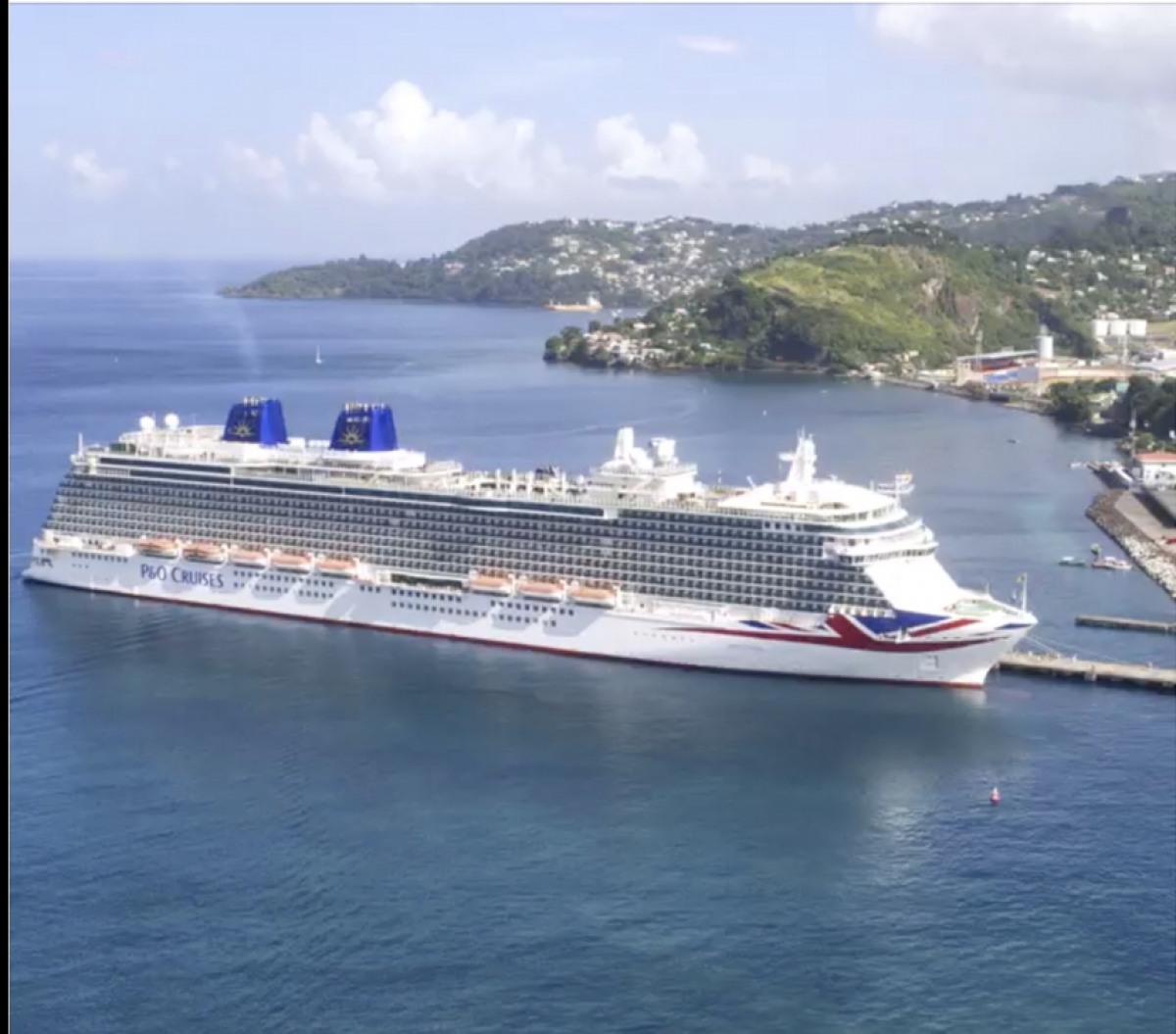
Happy Birthday to you!!!
LikeLike
Happy Birthday! it’s my 40th today, haha
LikeLike